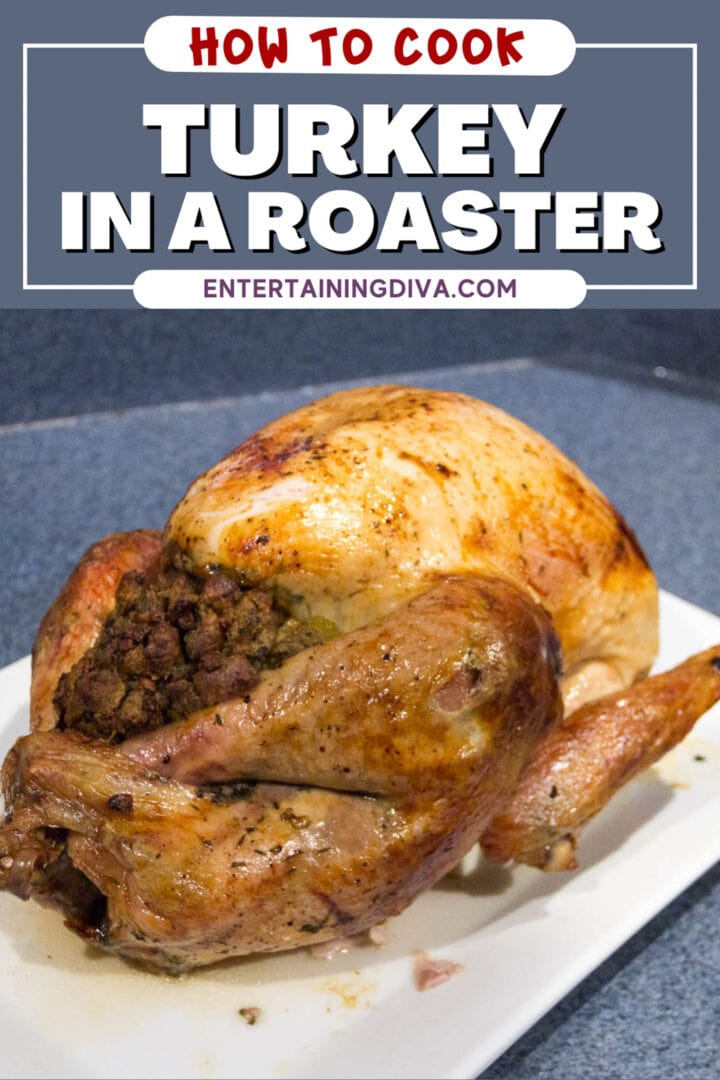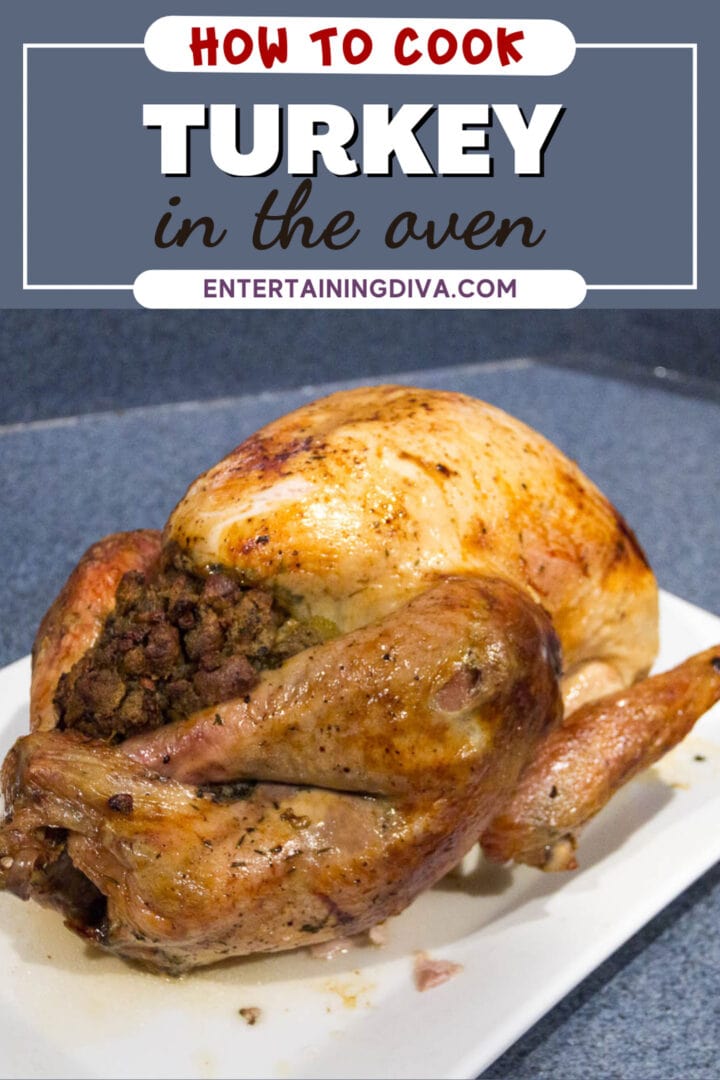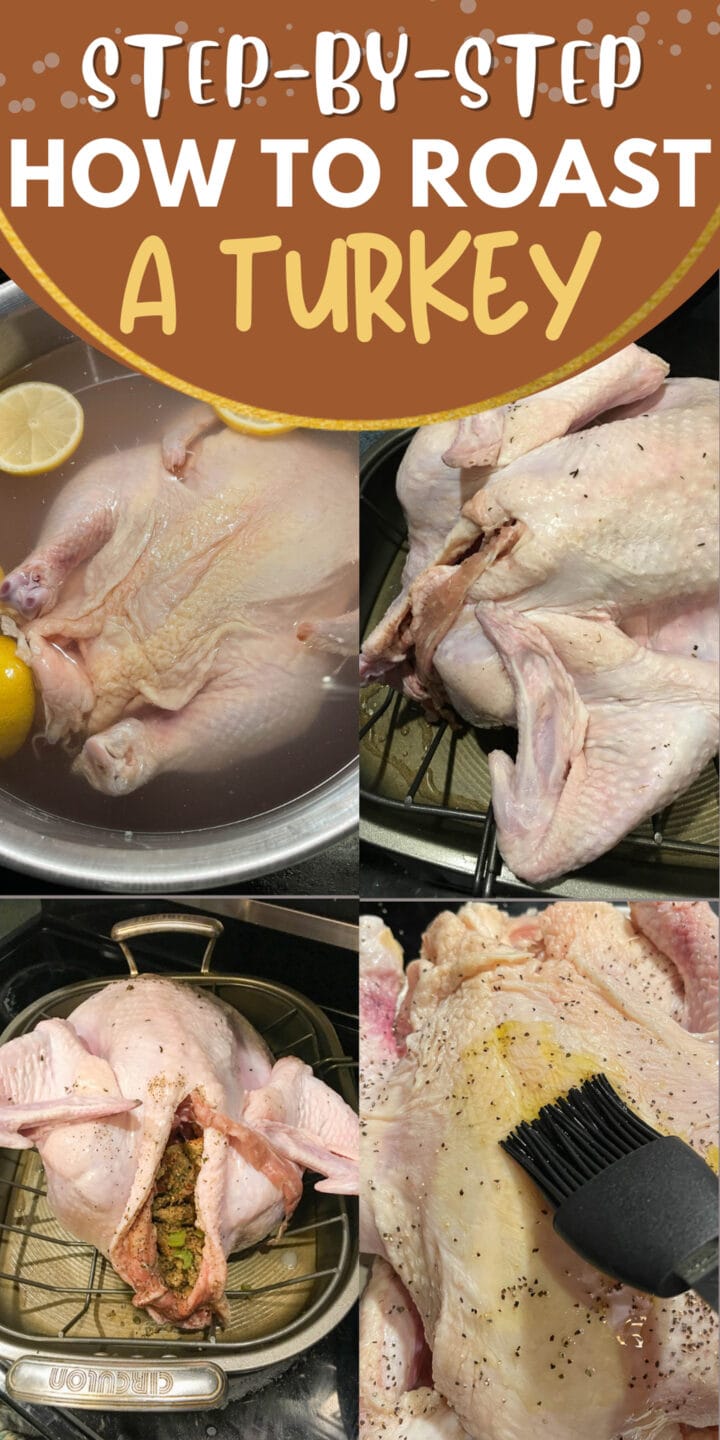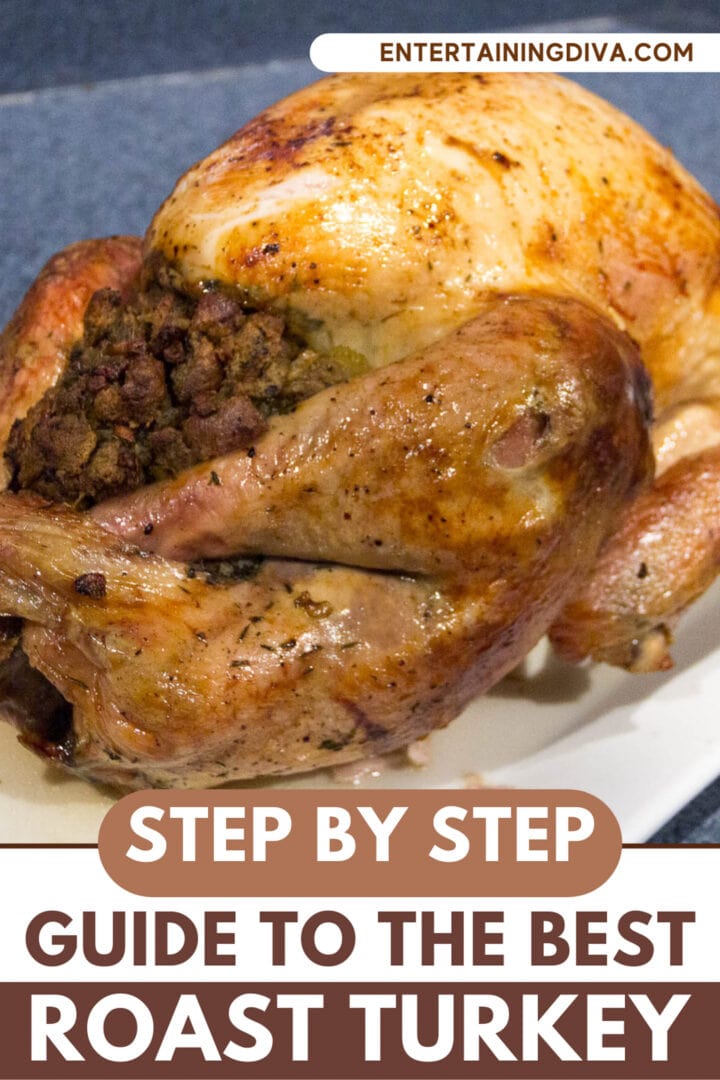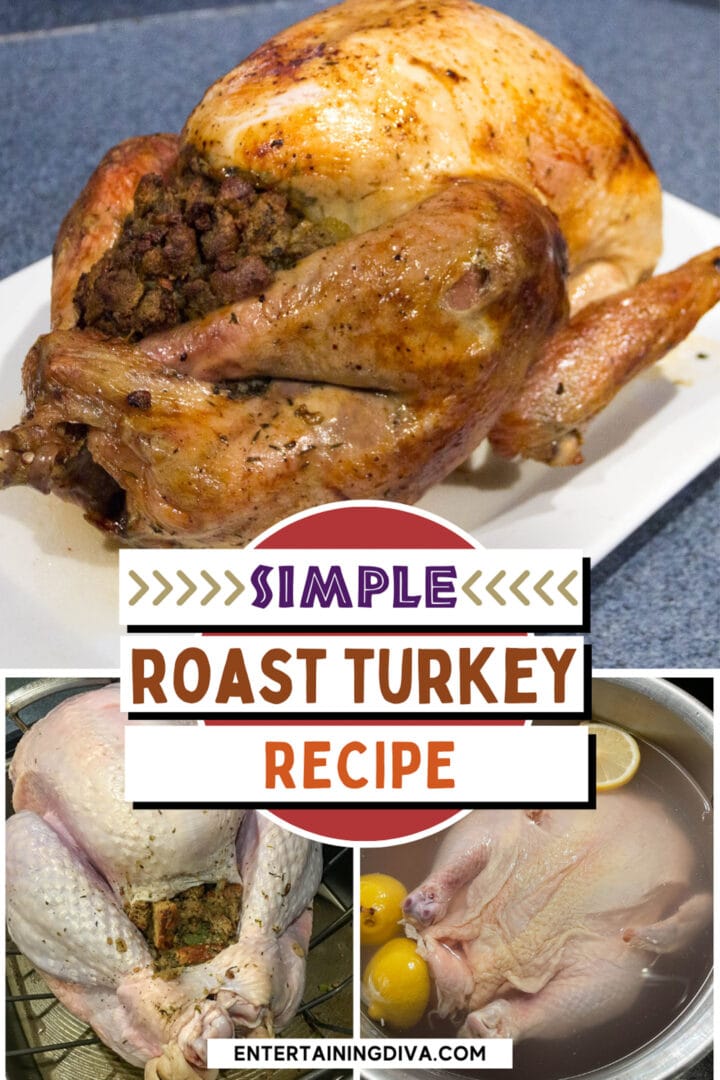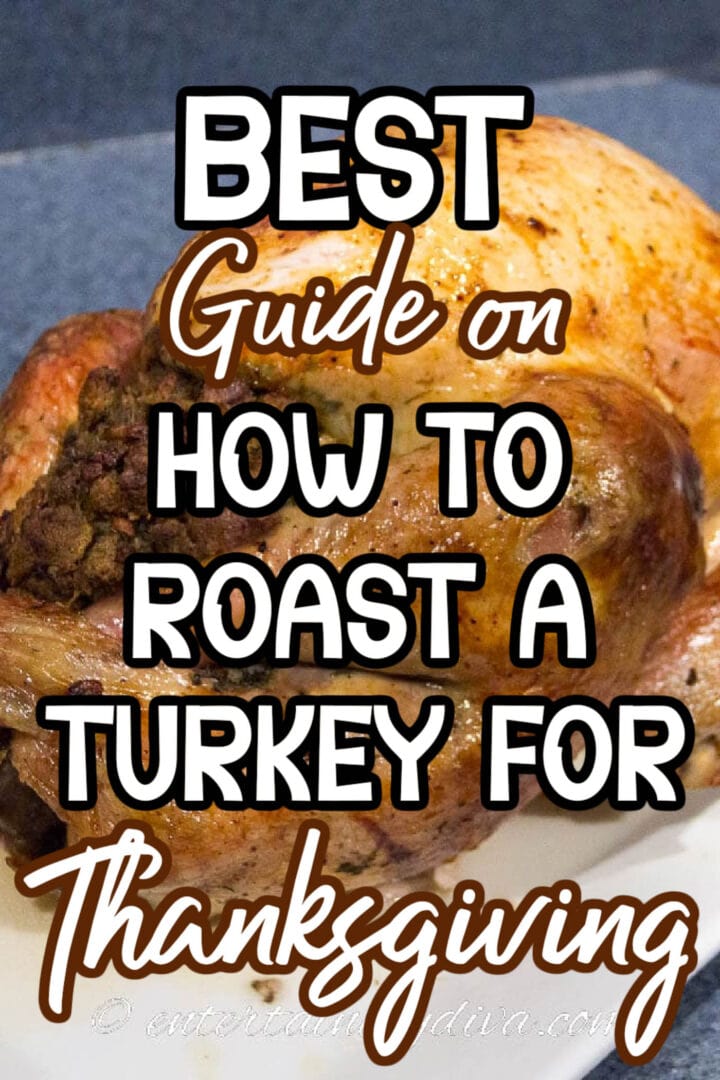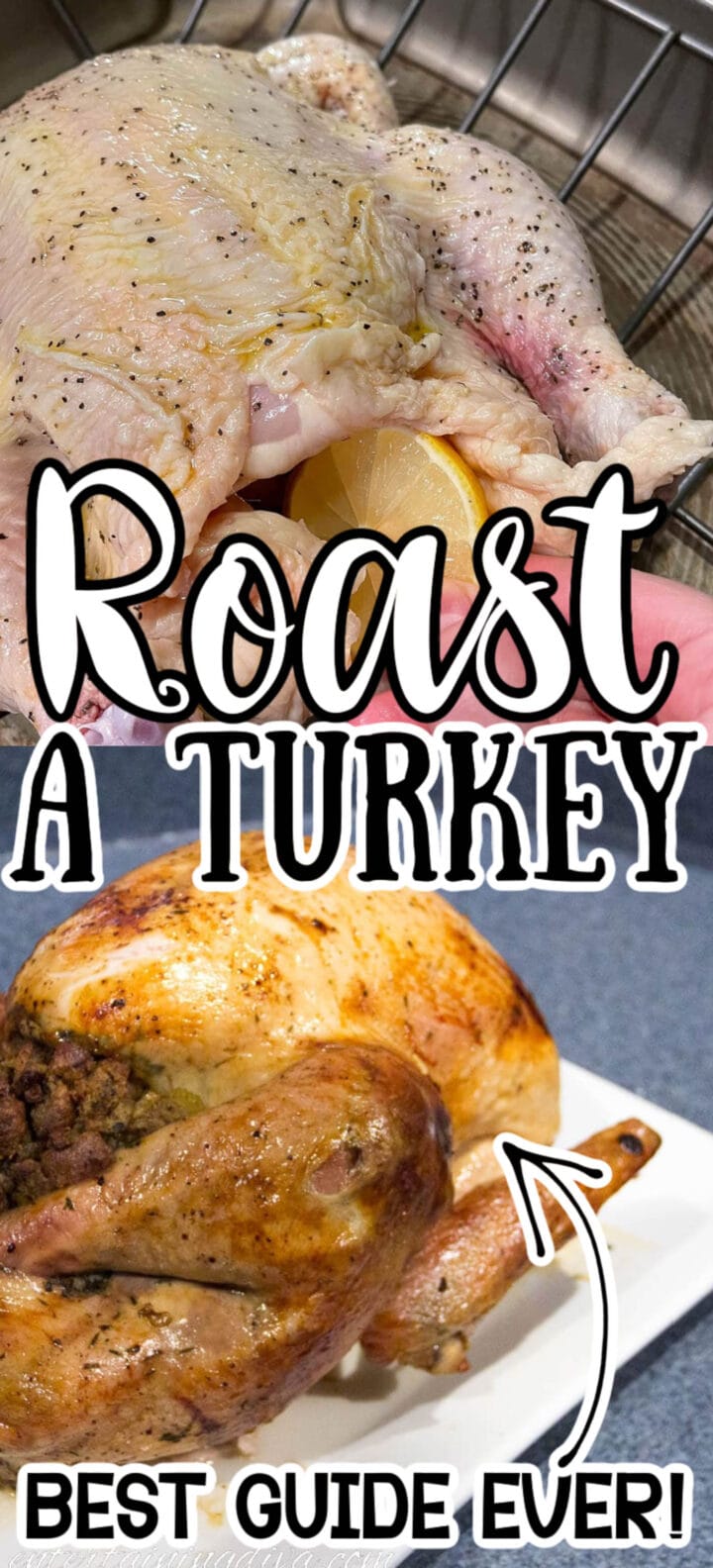How To Roast A Turkey (Step By Step)
If you’re not sure how to roast a turkey, this step-by-step recipe is for you. We’ll show you how to cook a bird that is juicy on the inside, crispy on the outside and tastes delicious.
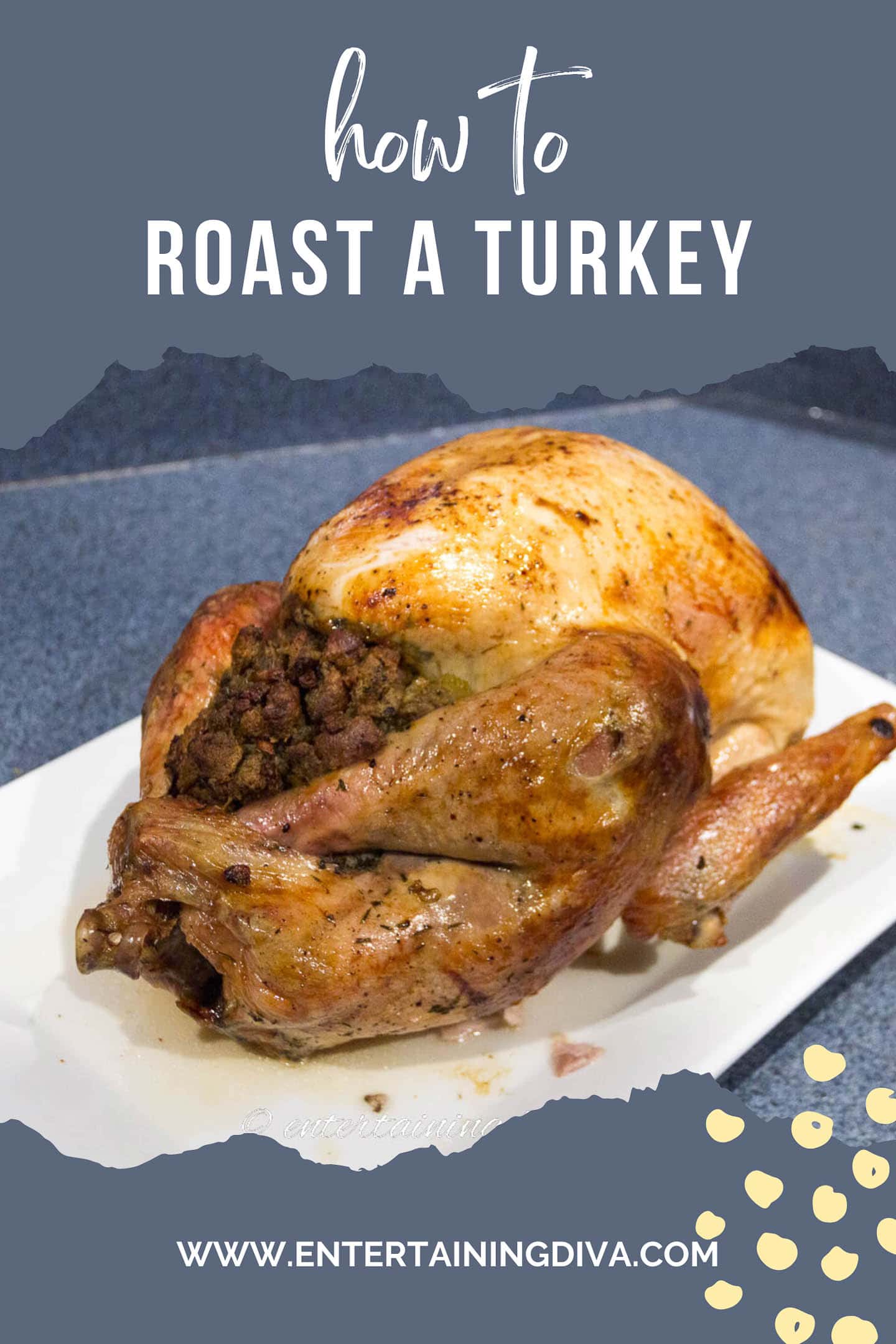
Roasting a turkey for a holiday meal is a task that can strike fear into the heart of even the most experienced cooks.
Trying to make sure that it is cooked while not drying out the breast meat is a tricky balancing act.
Which is where this tutorial for roasting a turkey came from.
It’s my no-fail recipe for the best-tasting turkey that turns out every time.
Ingredients
This post may contain affiliate links. We make a small commission if you buy the products from these links (at no extra cost to you). As an Amazon Associate, I earn from qualifying purchases. But we only recommend products we would use ourselves. For more information, click here to see our disclosures
- Turkey – either fresh or frozen. I find fresh turkey easier to work with because you don’t have to remember to thaw it.
- Seasoning – 1 cup salt (for brining) plus some extra for sprinkling on the turkey, black pepper
- Spices – 2 Tablespoons of dried thyme (for brining) plus 2 or 3 sprigs of fresh thyme if you are not stuffing the turkey.
- Sugar – 1 cup granulated sugar for brining
- Lemons – 2 for brining plus 2 more if you are not going to stuff the turkey
- Oil – 2 Tablespoons vegetable oil
Substitutions
- Use 2 teaspoons of dried thyme instead of the fresh thyme.
- Substitute 2 Tablespoons melted butter for the vegetable oil.
How to roast a turkey
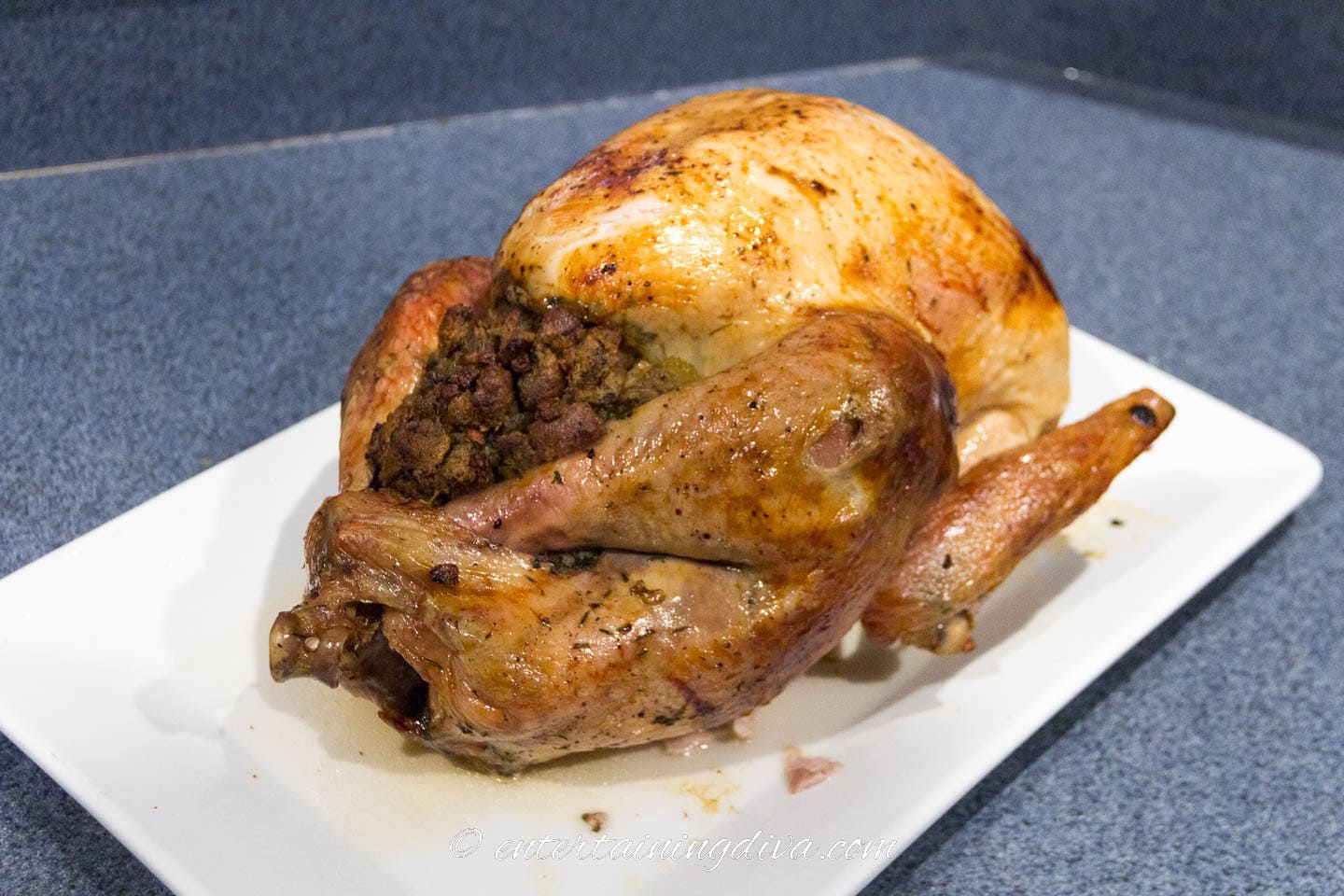
Thaw the turkey
If you have a frozen turkey, make sure to thaw it well in advance.
The best way to do this is to put the frozen turkey in the refrigerator but it can take a few days for it to thaw.
If you did not take it out of the freezer early enough, you can put it in cold water to thaw the rest of the way (which usually works best if you take the turkey out of its packaging).
Do not soak in warm water as this encourages bacteria growth and could make people sick.
Remove the giblets, liver and neck that is likely inside the turkey.
Brine the turkey
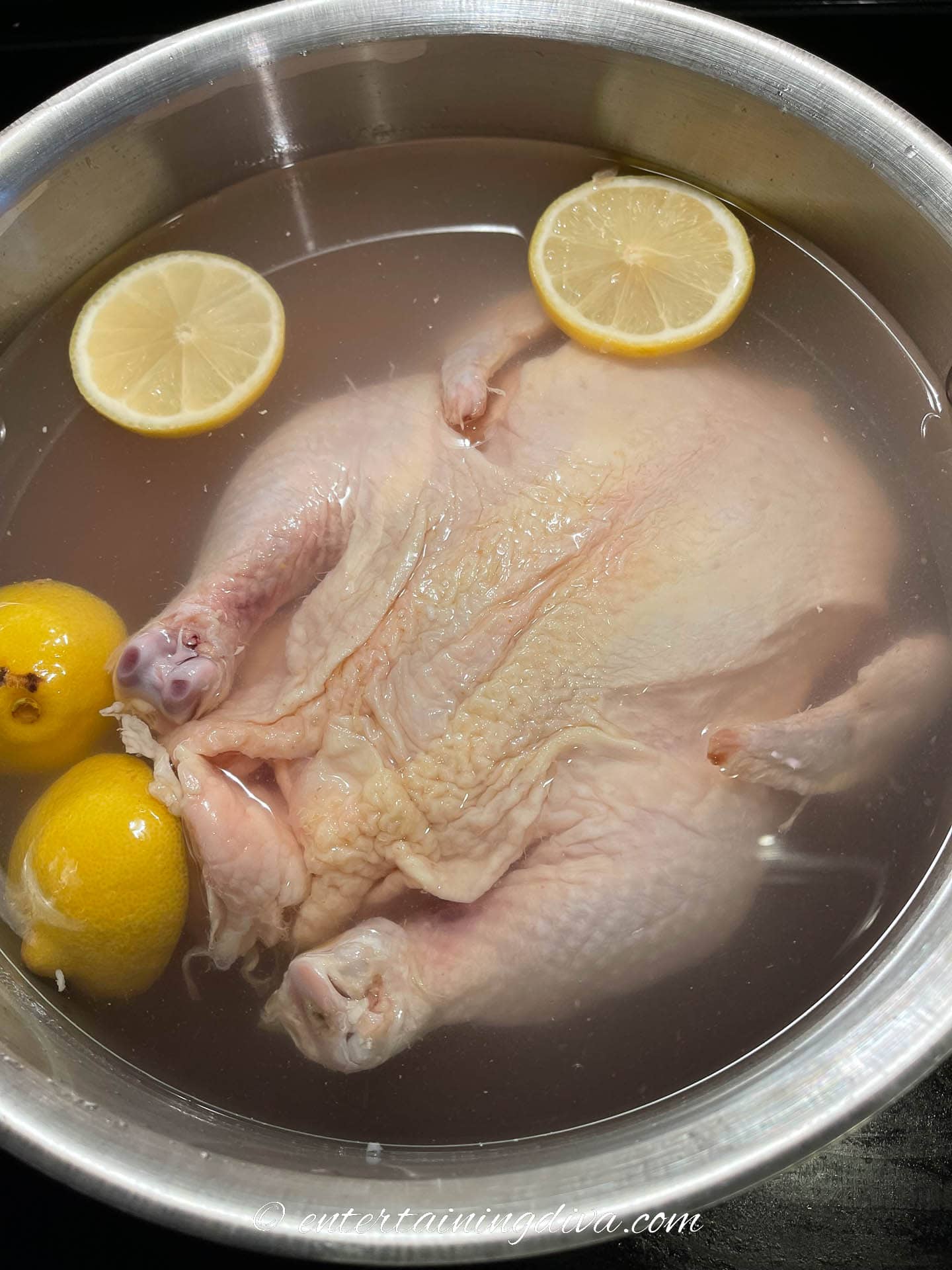
While this is an optional step, brining the turkey helps to prevent dryness, and adds extra flavor to the m eat.
To do this, you will need a pot that is large enough to hold the turkey.
Stir 1 cup of salt and 1 cup of sugar into 6 quarts of cold water until it has dissolved.
Add 2 Tablespoons thyme to the water.
Cut 1 lemon in half and squeeze the juice into the water. Then throw in the 2 lemon halves.
Slice the other lemon and add them to the water mixture as well.
Put the turkey into the pot breast side down. (The wings should be facing up).
If required, add more cold water so that the turkey is covered.
Put a lid on the pot or cover with foil, and refrigerate for at least 2 hours or overnight.
What to do if you don’t have a large enough pot for brining
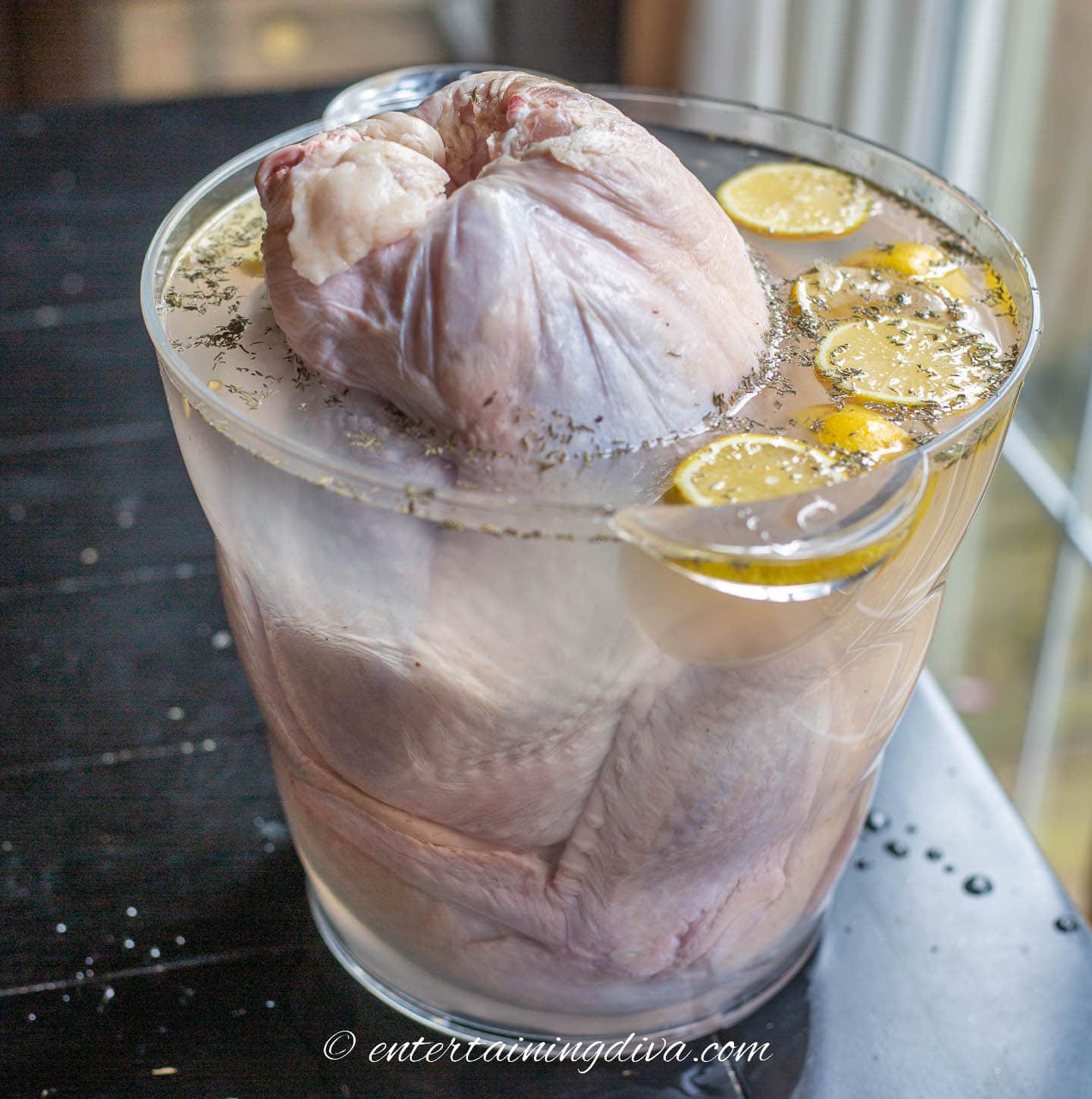
It can be difficult to find a pot big enough to fit the turkey, so you may need to get creative.
Try an ice bucket or a cooler.
If you can’t cover the whole turkey with water, make sure that the breast is covered. It is the part that benefits the most from
Prepare the turkey for baking
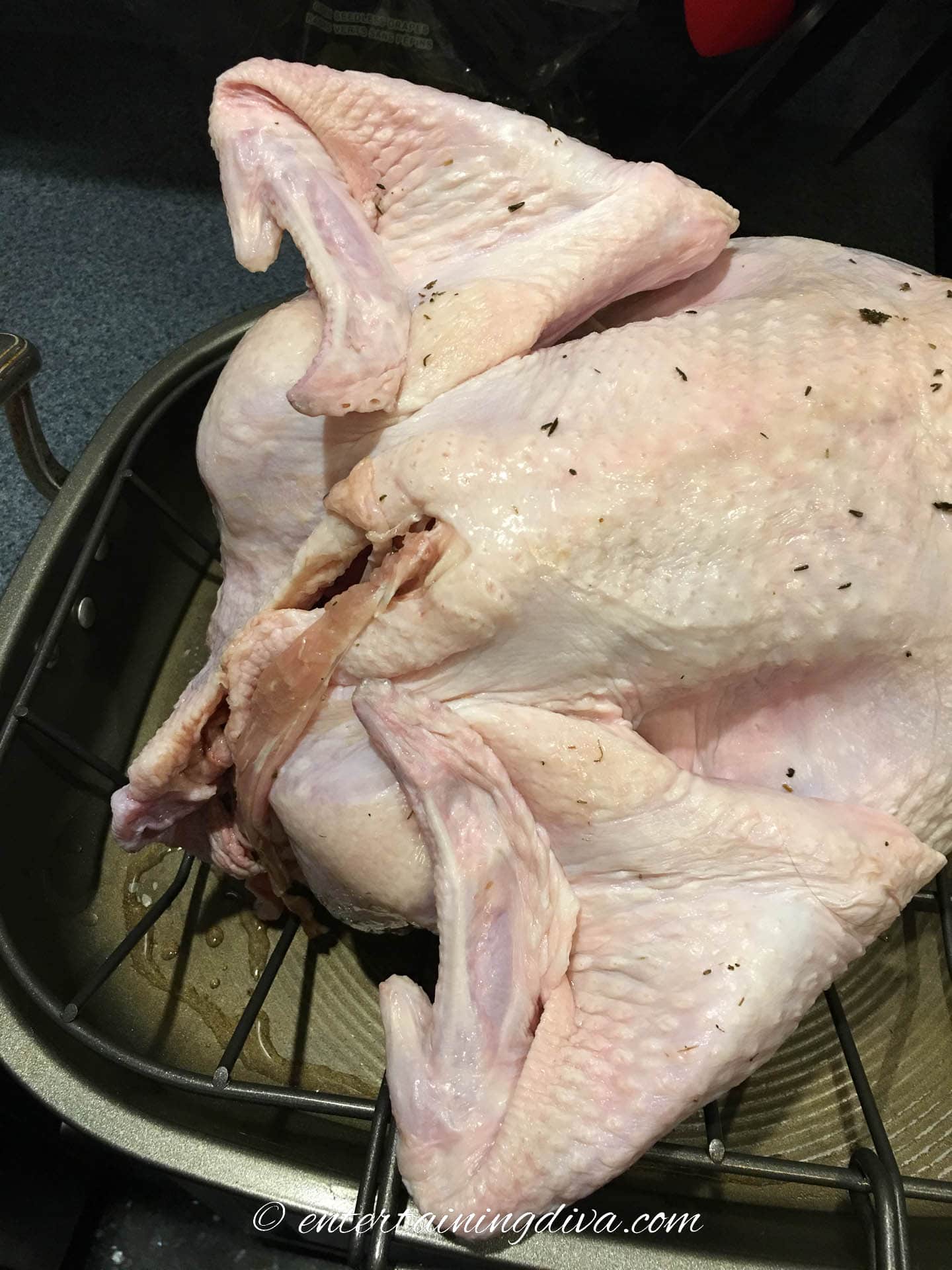
Use paper towel to dry the inside and outside of the turkey.
Twist the wing tips behind the back of the turkey.
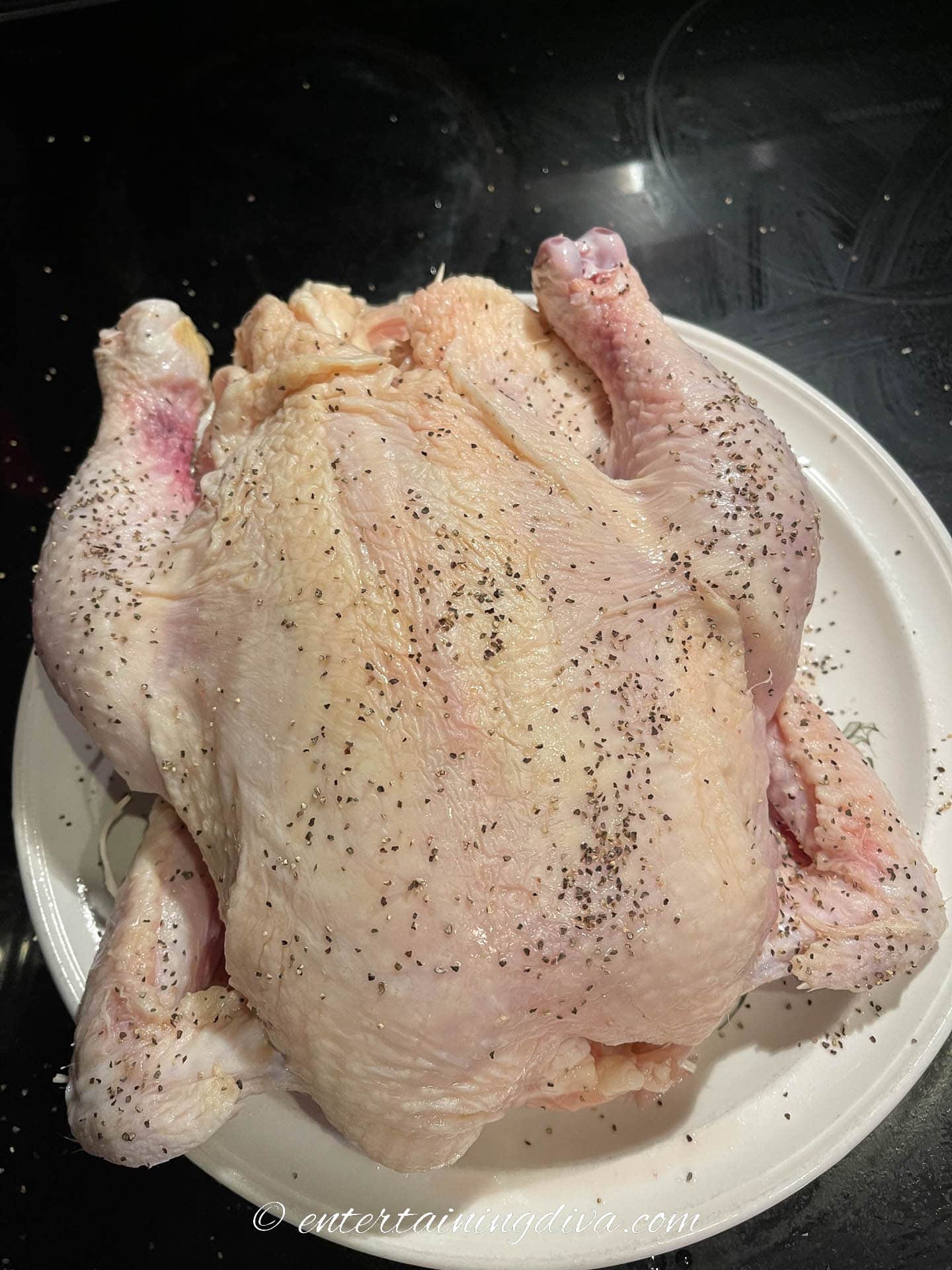
Then sprinkle the inside and outside of the turkey with salt and pepper.
Put the turkey on a rack in a shallow roasting pan with the breast side up. (The wings should be down.)
Using a roasting pan with a rack that has handles will make your life much easier when it comes to taking the turkey out of the pan when it is done.
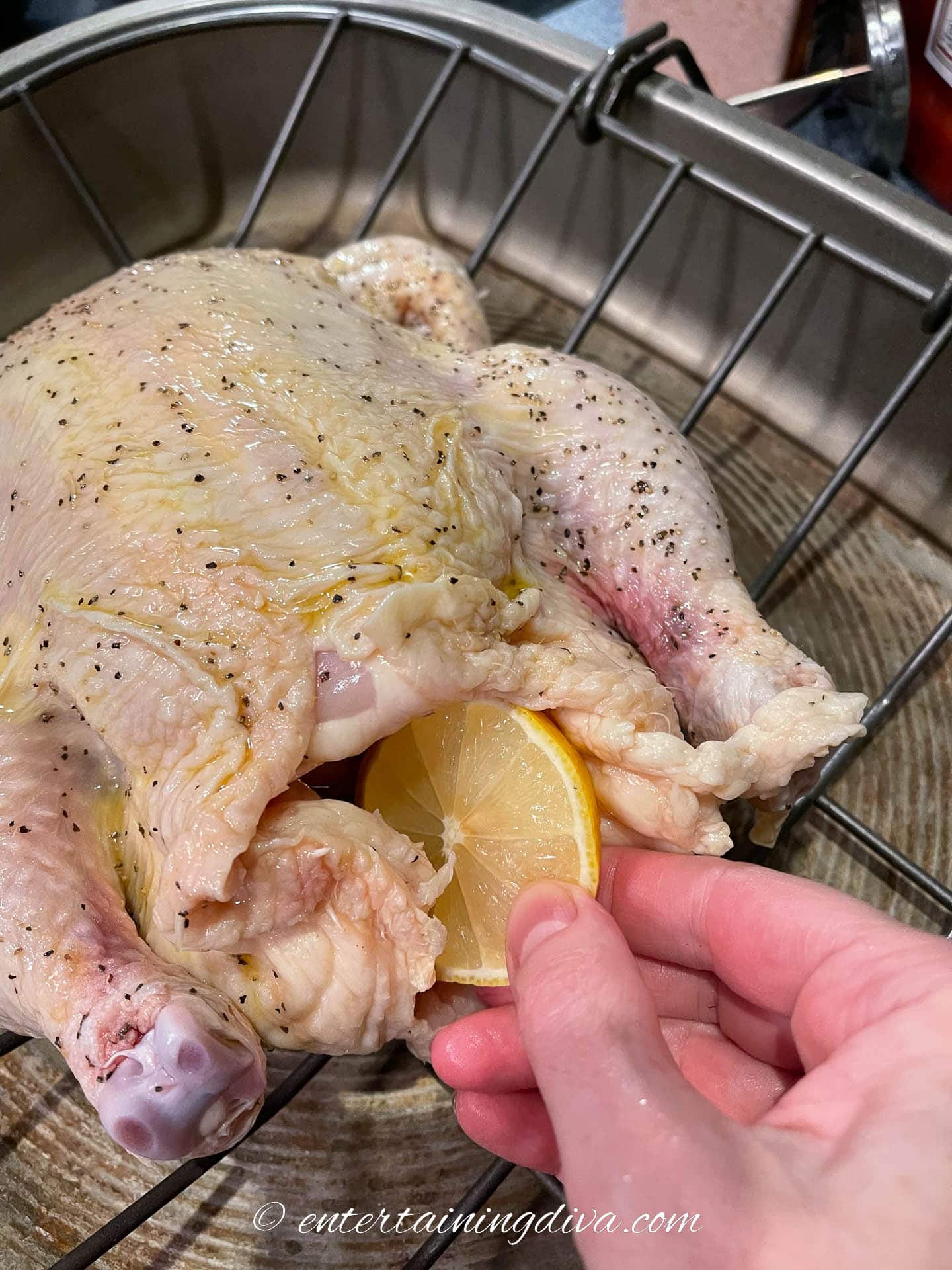
Fill the inside of the turkey with stuffing, or two sliced lemon and fresh thyme. While this step is not necessary, it does add flavor to the turkey meat.
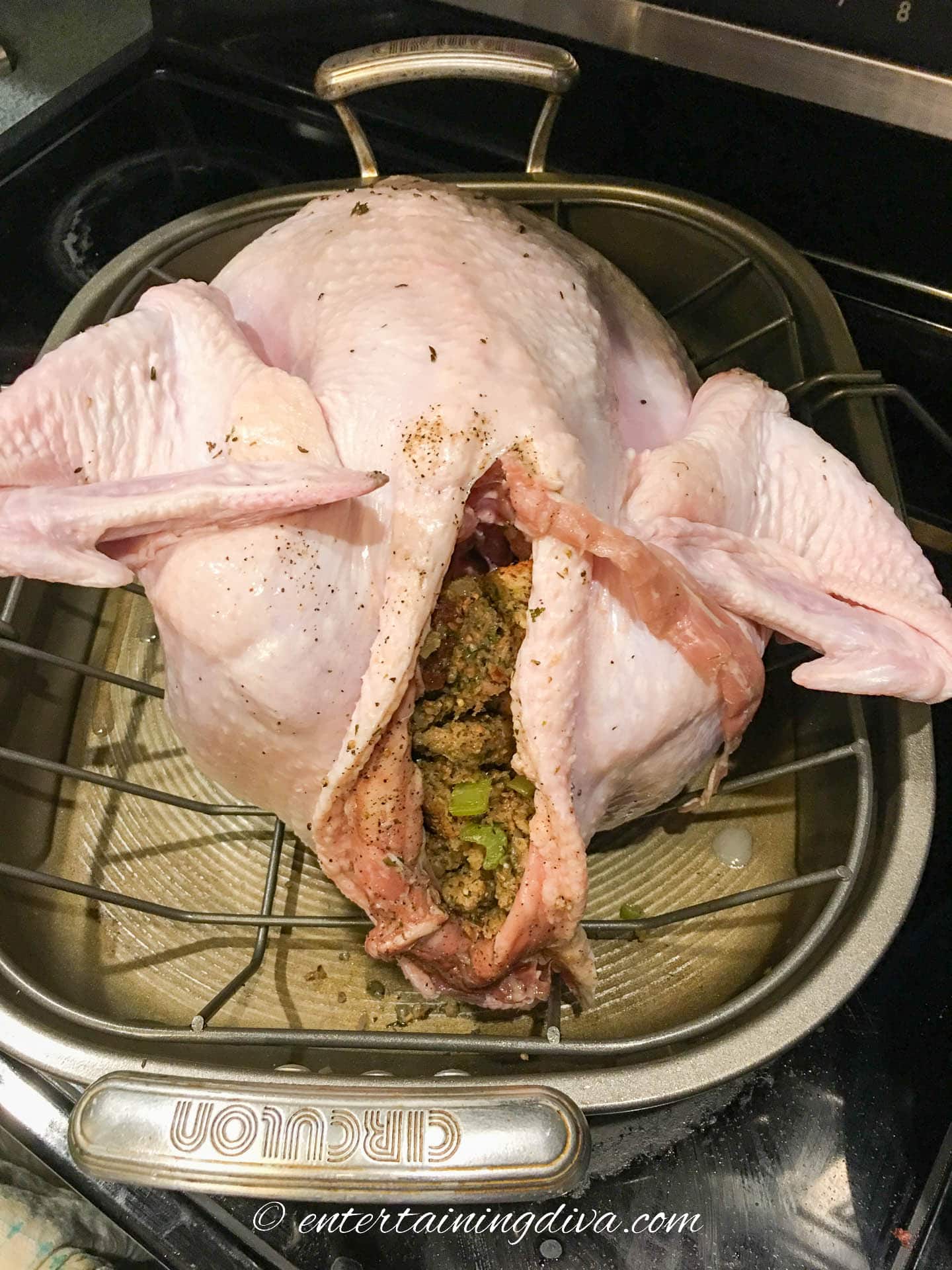
If are using stuffing, fill the cavity at the back of the turkey, then pull the skin over the opening and attach to the turkey using a skewer.
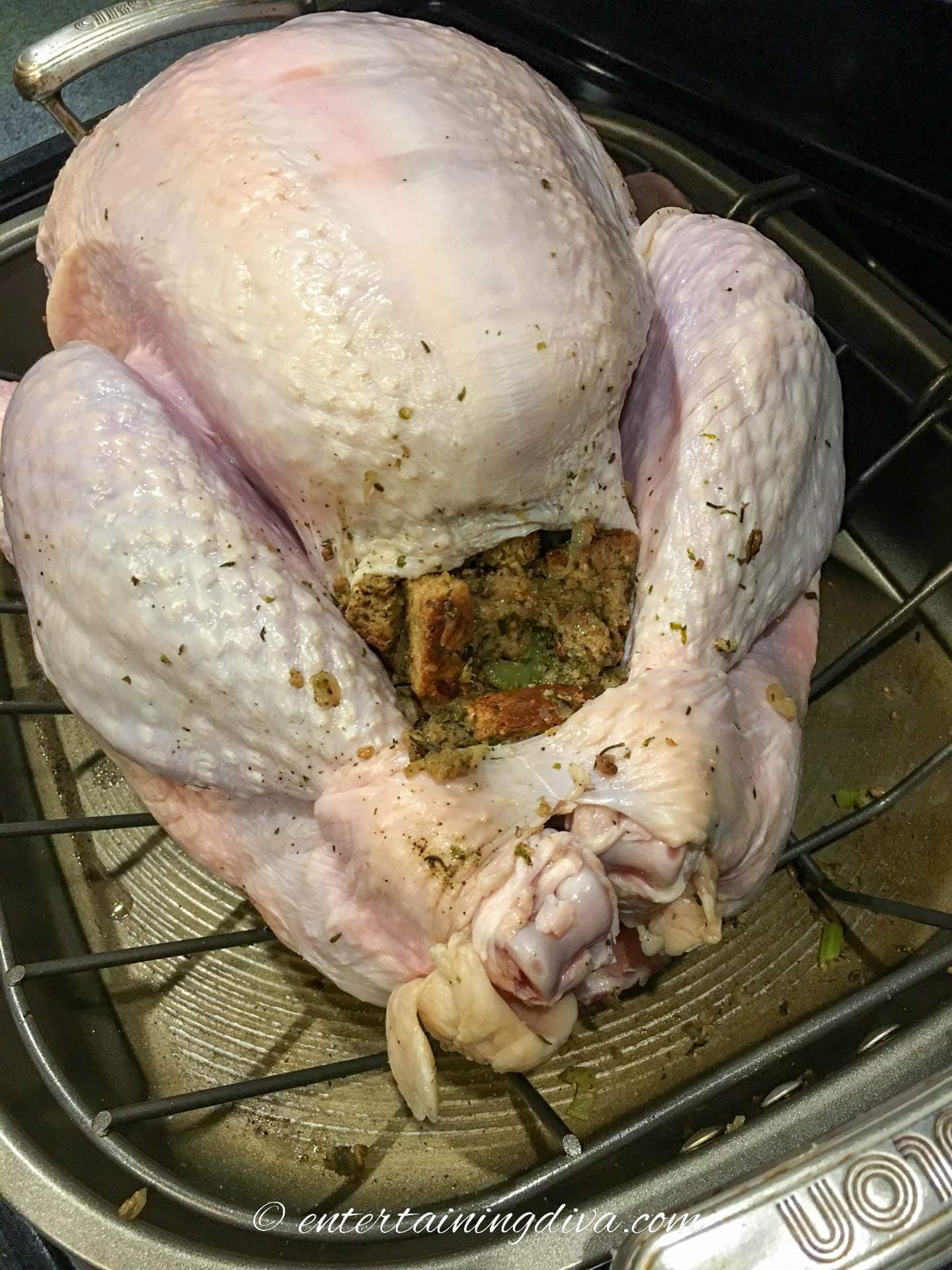
Tie the legs together with a string or re-usable truss ties, if necessary. (Some turkeys will already have the legs tied, like the one above). Tuck in any extra skin into the middle.
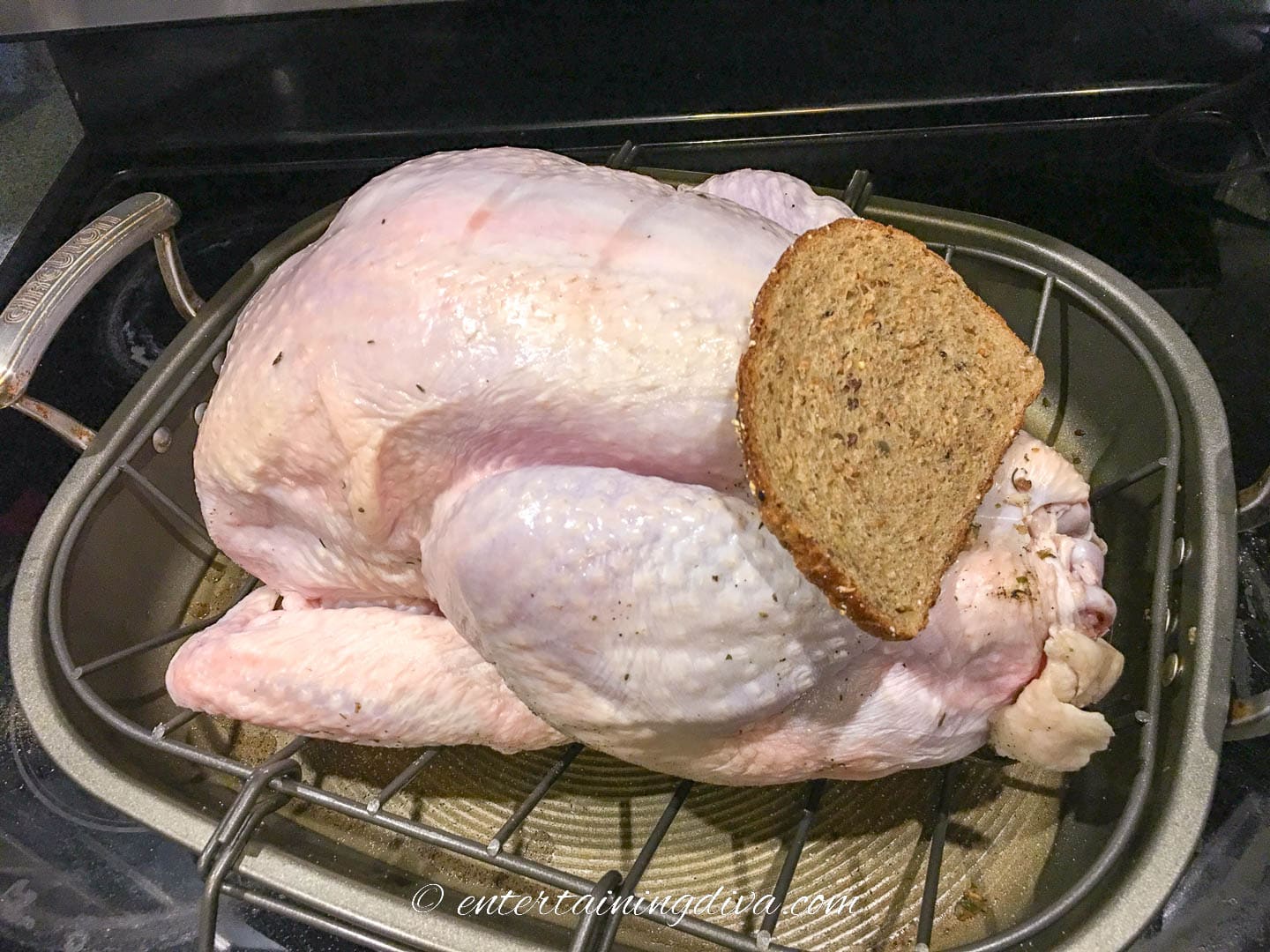
For birds with stuffing, cover the opening above the legs with a slice of bread. This will prevent it from getting dried out.
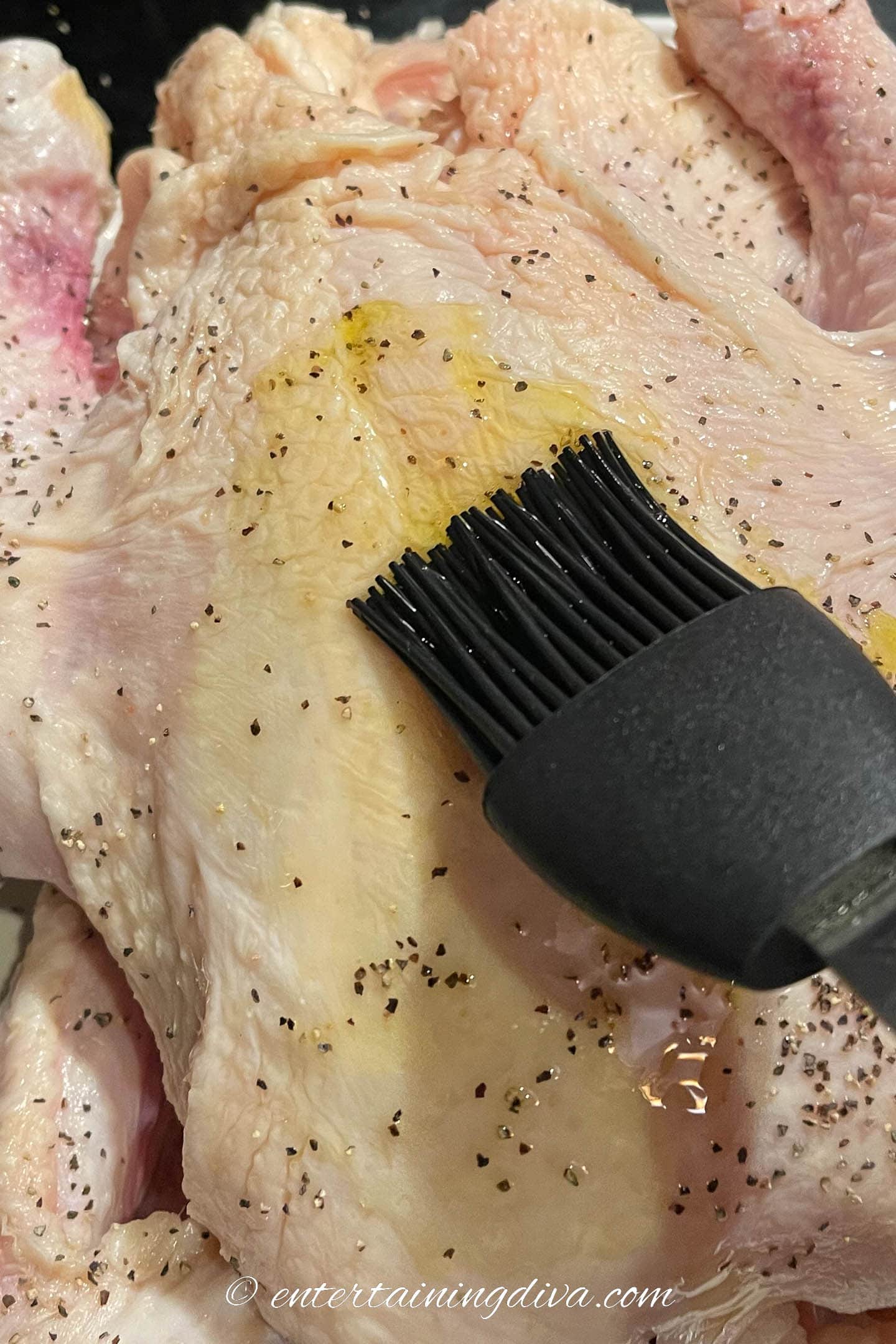
Brush the turkey with melted butter or vegetable oil.
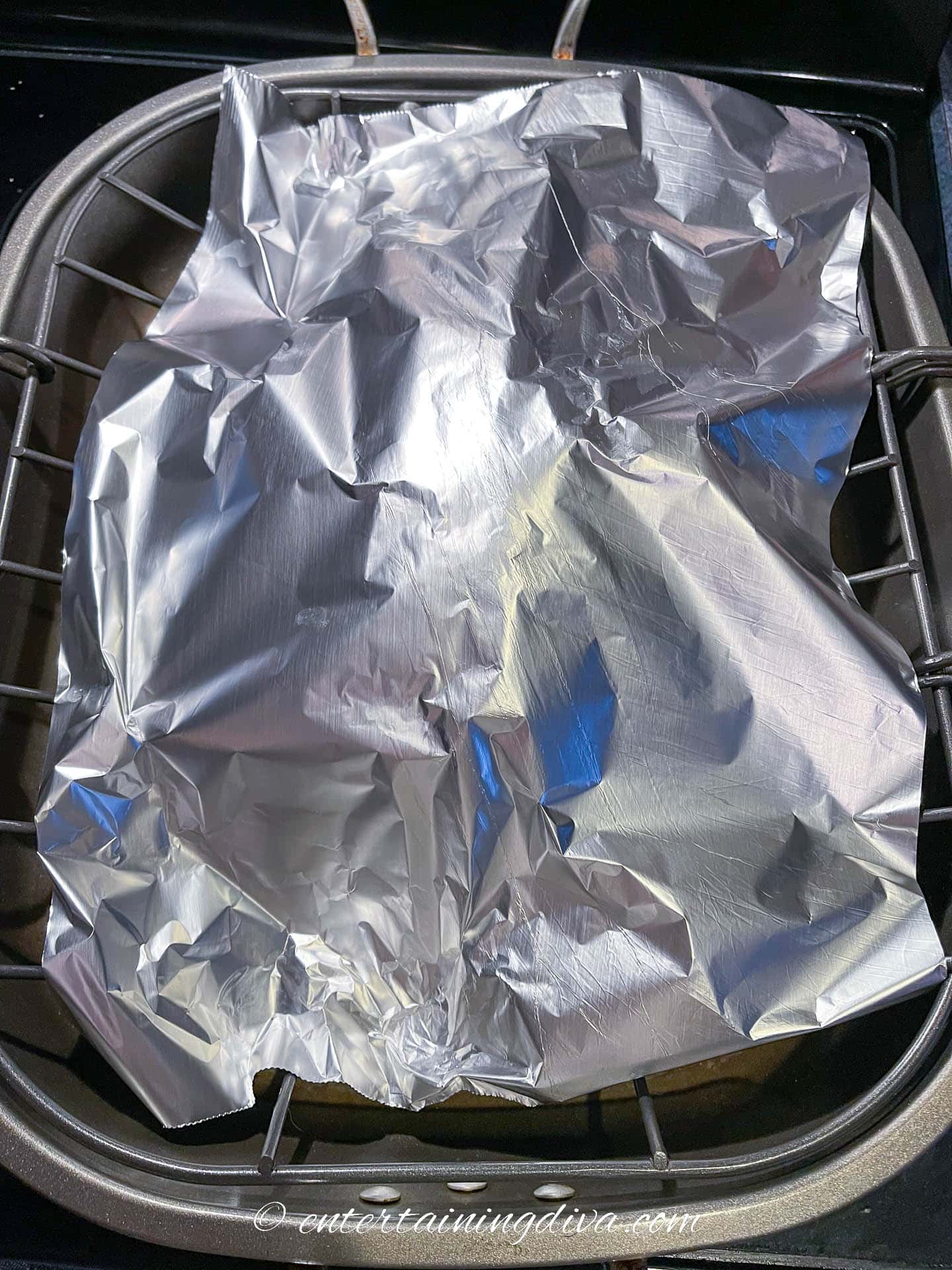
Cover the pan loosely with foil, dull side out.
Do not wrap the turkey tightly. The sides should be left open to allow the turkey to breathe.
Bake
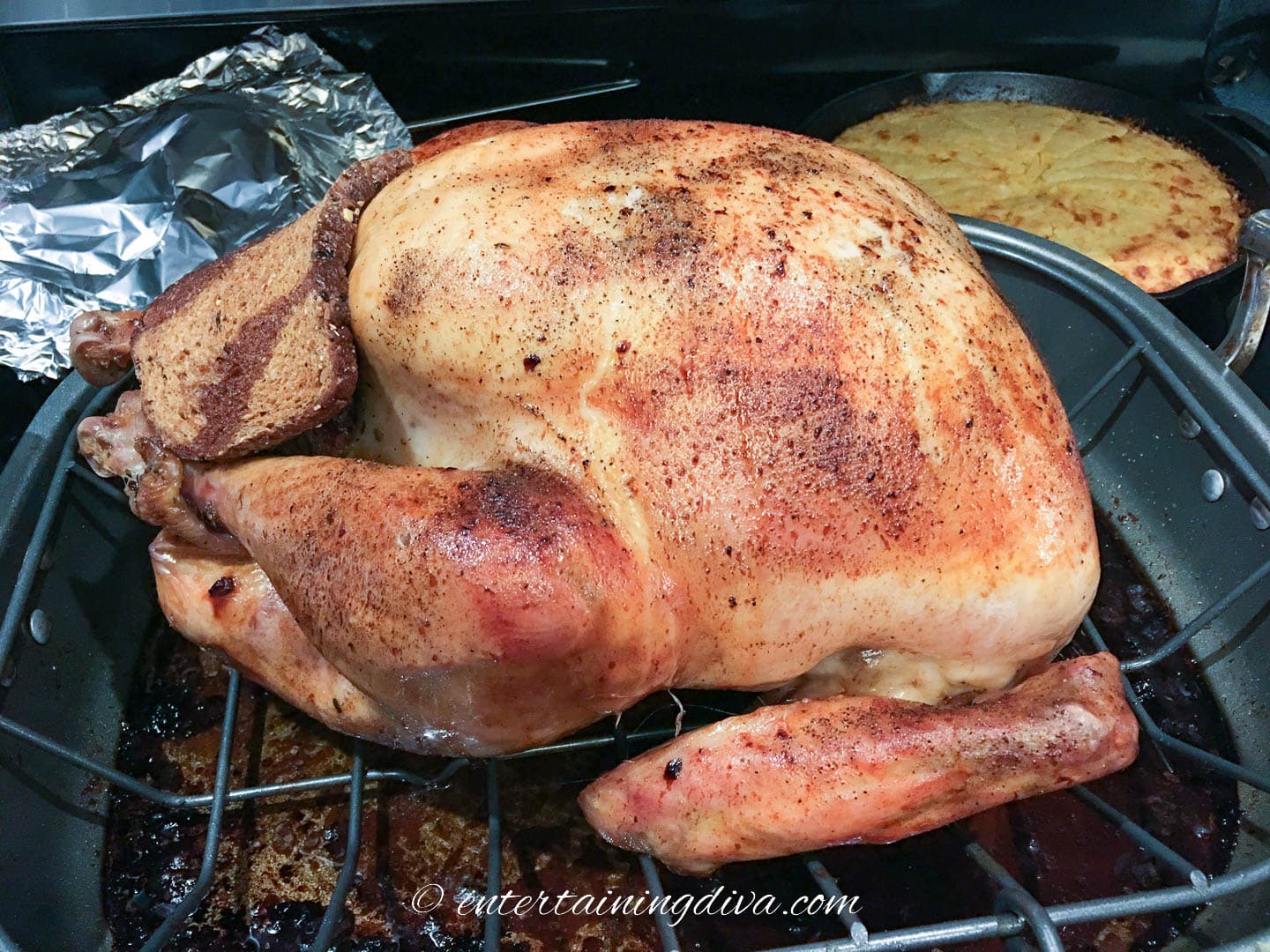
Bake in a 325℉ oven.
The time to cook will differ based on the size of the turkey and whether or not it’s stuffed.
Here are the average cook times:
With Stuffing
8 pounds: 3 to 4 hours
12 pounds: 4 to 5 hours
16 pounds: 5 to 6 hours
20 pounds: 6.5 to 7.5 hours
Without Stuffing
8 pounds: 2.5 hours to 3 hours
12 pounds: 3.5 to 4 hours
16 pounds: 4.5 to 5.5 hours
20 pounds: 6 – 7 hours
About an hour before the turkey is done, remove the foil so the top of the turkey can brown.
Use a baster to baste the turkey every 15 minutes with the juices from the bottom of the pan.
Differences in ovens, turkeys, and pans cause the cooking time to vary.
To check if the turkey is done, pinch the thickest part of the drumstick. It should feel soft. And if you stick a fork in it, the juices that come out should be clear (not pink or red).
Or use a meat thermometer stuck into the thickest part of the thigh (without touching any bone). The temperature should be 185℉.
If you put the thermometer into the stuffing, it should be at 165℉.
Serve
When it is done, remove the turkey from the oven and let it stand for a few minutes.
Remove the stuffing.
Then transfer the turkey to a serving plate, carve it and serve with roasting pan gravy.
What to serve with Turkey
Or read our complete holiday meal menu.
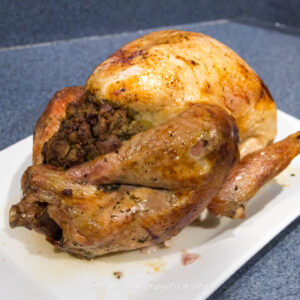
How to roast a turkey
Ingredients
- 1 turkey
- 1 teaspoon salt
- 1 teaspoon ground black pepper
- 2 Tablespoons vegetable oil or melted butter
- 1 slice bread (only required if you are stuffing the turkey)
- 2 lemons, sliced (only required if you are not stuffing the turkey)
- 2 to 3 sprigs fresh thyme, or 2 teaspoons dried thyme (only required if you are not stuffing the turkey)
For Brining (optional)
- 1 cup salt
- 1 cup sugar
- 2 Tablespoons dried thyme
- 2 lemons 1 cut in half, 1 sliced
Equipment
- 1 Large pot for brining
- 1 roasting pan
- reusable truss ties or string
- skewer (optional, only required if you are using stuffing)
- brush
- foil
- baster
Instructions
- If you have a frozen turkey, make sure to thaw the turkey well in advance.
- Remove the giblets, liver and neck that is likely inside the turkey.
- (Optional) Brine the turkey to help prevent dryness, using the instructions below.
- Use paper towel to dry the inside and outside of the turkey.
- Sprinkle the outside and inside of the turkey with salt and pepper.
- Put the turkey on a rack in a shallow roasting pan with the breast side up.
- Twist the wing tips behind the back of the turkey.
- Tie the legs together with a string or re-usable truss ties, if necessary (some turkeys come with them already tied). Tuck any extra skin into the middle.
- Fill the inside of the turkey either with stuffing, or with 2 sliced lemons and fresh thyme.
- If you are using turkey stuffing, fill the cavity at the back of the turkey. Then pull the skin over the stuffing and attach the free end to the turkey using a skewer. Place a slice of bread over the opening above the legs. This will help to keep the stuffing from drying out.
- Brush the turkey with vegetable oil or melted butter.
- Cover the turkey loosely with foil, dull side out, keeping the sides open to allow the turkey to breathe.
- Bake at 325°F. The amount of time required depends on the weight of the turkey and whether or not it's stuffed.Stuffed turkey: 8 pounds – 3 to 4 hours; 12 pounds – 4 to 5 hours; 16 pounds – 5 to 6 hours; 20 pounds – 6.5 to 7.5 hoursTurkey without stuffing: 8 pounds – 2.5 hours to 3 hours; 12 pounds – 3.5 to 4 hours; 16 pounds – 4.5 to 5.5 hours; 20 pounds – 6 to 7 hours
- About an hour before the turkey is done, remove the foil from the top of the turkey to let it brown.
- Use a baster to baste the turkey every 15 minutes with the juices from the bottom of the pan
- Remove the turkey from the oven and let it stand for a few minutes.
- Remove the stuffing.
- Carve the turkey and serve with gravy.
How to brine the turkey
- Add 1 cup salt, 1 cup sugar and 6 quarts of cold water to a large pot, and stir until the salt has dissolved.
- Add 2 Tablespoons thyme to the water.
- Squeeze the juice from the lemon halves into the water and then throw them in, too.
- Add the sliced lemon to the water as well.
- Add the turkey to the pot, breast side down.
- If required, add more cold water to cover the turkey.
- Cover the pot and refrigerate for at least 2 hours or overnight.
Notes
- If you are using a pre-basted turkey (such as a Butterball Turkey), follow the instructions on the package for baking.
- It is sometimes difficult to find a pot that is big enough to fit the turkey, so you may need to get creative. Try an ice bucket or a cooler.
- To check if the turkey is done, pinch the thickest part of the drumstick. It should feel soft when the turkey is done. Or use a meat thermometer stuck into the thickest part of the thigh (without touching any bone). The temperature should be 185°F. If you put the thermometer into the stuffing, it should be at 165°F.
Nutrition values are estimates only, using online calculators. Please verify using your own data.
Have comments or questions on how to roast a turkey? Tell us in the section below.
This post was originally published on November 2, 2014 but was updated with new content on March 19, 2024.

